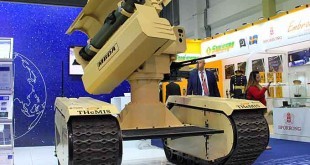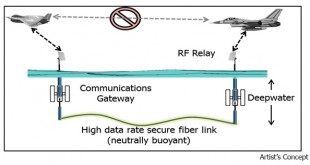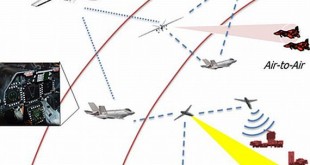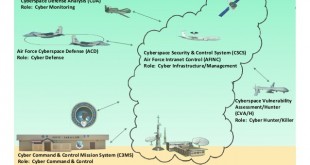Advanced Integrated Air Defense Systems, Anti-satellite, and computer network attack weapons can hold capabilities in air, space and cyber at risk and create Anti-Access and Area Denial (A2AD) quandaries. The goal of Multi-Domain Operations is to ensure the ability to integrate operations in multiple domains and create complex dilemmas for …
Read More »Yearly Archives: 2019
Resistive RAM (RRAM), a Non-volatile memory (NVM) technology, key to support artificial intelligence on the Internet of Things, or “edge AI”.
Ever-growing data generation driven by mobile devices, the cloud, the IoT , and big data, as well as novel AI applications, all part of the megatrends, requires continuous advancements in memory technologies. RRAM is a nonvolatile memory that is similar to PCM. The technology concept is that a dielectric, …
Read More »Perovskite-based LEDs are beginning to rival OLEDs in terms of efficiency
Perovskites have generated huge interest in recent years because of their potential for solid-state lighting and displays, despite lagging behind other state-of-the-art technologies in efficiency and longevity. Now two independent teams have reported light-emitting diodes (LEDs) based on perovskites that have surpassed a milestone in efficiency [Cao et al., Nature …
Read More »DARPA SCORE program Aims to develop automated tools to Score Social and Behavioral Research important for national security
Social science provides a variety of research and educational capabilities to military to address the human dimensions of military organizations and their operational contexts. For instance, psychological and human performance criteria are firmly rooted in social science constructs within the U.S. Department of Defense (DOD). In the United States, …
Read More »Future Global Quantum internet could be brought down by Quantum terrorists
Quantum cryptography is an emerging technology in which two parties may simultaneously generate shared, secret cryptographic key material using the transmission of quantum states of light. A unique aspect of quantum cryptography is that Heisenberg’s uncertainty principle ensures that if Eve attempts to intercept and measure Alice’s quantum transmissions, her …
Read More »Countries launch antitank autonomous UGVs, intensifying robotic warfare
Since the creation of the main battle tank during World War I, there has been a constant arms race between the development of anti-tank weapons and vehicle protection systems, however “Weapons’ ability to penetrate armor, however, has advanced faster than armor’s ability to withstand penetration”. One of the technology …
Read More »DARPA’s TUNA program develops fiber optical undersea communication Network for backup in contested environment
The capability of Russia and China to disrupt American military wireless and satellite communications using electronic warfare has been rising. This is athreat to US Navy operations that require connectivity among a diverse set of platforms, including submarines, surface ships, aircraft, and shore sites. The links among these platforms support …
Read More »DARPA DBM develops automated AI decision aid for managing Distributed air-to-air and air-to-ground combat under Electronic Warfare environment
As commercial technologies become more advanced and widely available, adversaries are rapidly developing capabilities that put our forces at risk. To counter these threats, the U.S. military is developing systems-of-systems concepts in which networks of manned and unmanned platforms, weapons, sensors, and electronic warfare systems interact over robust satellite and …
Read More »US Navy seeking new technologies for Gun-launched guided projectile (GLGP) or Hypervelocity projectile (HVP)
Gun-launched guided projectile (GLGP), previously known as the hypervelocity projectile (HVP) is the new weapon of US Navy that could improve the ability of Navy surface ships to defend themselves against missiles, unmanned aerial vehicles (UAVs), and surface craft. As the Navy was developing EMRG, it realized that the …
Read More »USAF Offensive Cyberspace Operations (OCO) program developed Cyber Mission Platforms, Cyber Weapons Platform & Command and Control Mission System
The Department of Defense (DOD) defines cyberspace as a global domain within the information environment consisting of the interdependent network of information technology infrastructures and resident data, including the internet, telecommunications networks, computer systems, and embedded processors and controllers. The DOD Information Network (DODIN) is a global infrastructure carrying DOD, …
Read More » International Defense Security & Technology Your trusted Source for News, Research and Analysis
International Defense Security & Technology Your trusted Source for News, Research and Analysis









